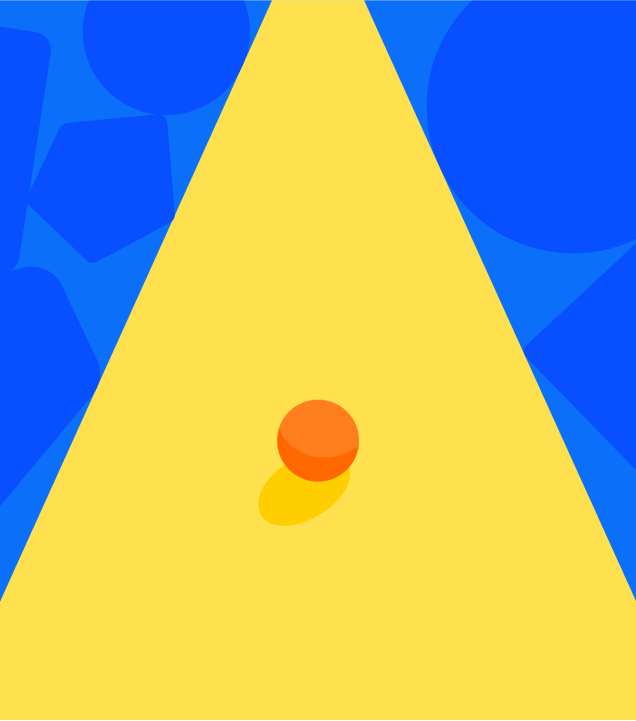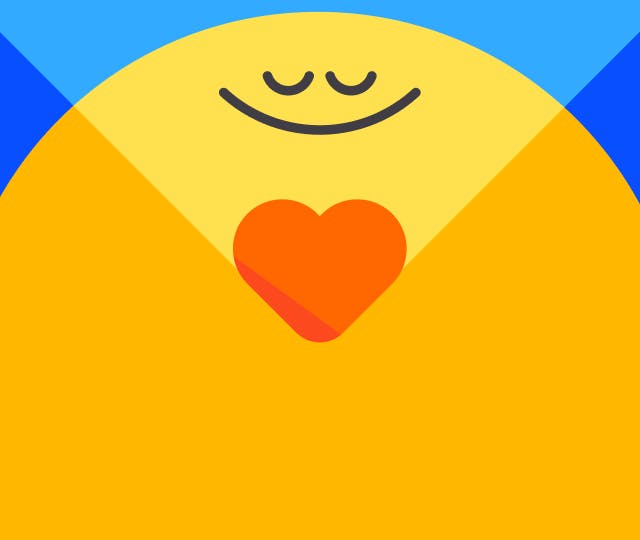Visualization meditation
By Your Headspace Mindfulness & Meditation Experts
Sep 26, 2023
At one point or another, everyone has recited some version of the quote “Life is a journey, not a destination” in their minds. In today’s always-on-the-go society, that mindset can get lost along the way. Many of us get tangled in webs of stress and anxiety, loss of focus, and sleepless nights. While becoming more in tune with our bodies and minds is no easy feat, meditation can help — and techniques such as visualization can help us achieve the health and wellness benefits we are seeking.
Refresh with this 3-minute visualization meditation
This Headspace guided visualization meditation helps you to maginine a steady stream of sunshine flowing down into the body, bringing with it a sense of warmth space and ease. It's almost as though it just flushes out any tension from the body. Any discomfort just melting away dissolving in the sunlight.
What is visualization?
Visualization, on its own, involves picturing in your mind the outcome of something before it's happened, whether that's a task or opportunity at hand — such as getting on stage to speak before a large audience — or a sport about to be played. Visualization gained popularity in the 1980s when the Russians began using the technique to excel in sports following the 1984 Olympics.
Today, notable athletes such as Michael Phelps also employ visualization as part of their winning strategy. “For months before a race, Michael gets into a relaxed state. He mentally rehearses for two hours a day in the pool. He sees himself winning. He smells the air, tastes the water, hears the sounds, sees the clock,” Phelps’ Olympic swimming coach Bob Bowman said in a 2016 interview with Forbes.
Visualization and visualization meditation are not quite interchangeable. Rather, they intersect at times and both rely on your imagination. For example, in order to achieve success à la Phelps, you would be employing pure visualization. Your mind does the heavy lifting while allowing your body to relax, and begins picturing an experience before acting on it in real life. This eases performance anxiety through familiarity.
In a visualization meditation, on the other hand, the brain uses the same imaginative mechanics, but it instead focuses on an image of something or someone, that is conjured as the object of focus.
What is the science behind visualization working? Well, the brain is a fan of visual stimuli. During the exercise, your amygdala — the tiny structure in the center of the brain responsible for the fight or flight response — has trouble distinguishing between something that is simply being seen during a visualization meditation session and something that is actually happening in real time.
One type of visualization meditation is meditation for compassion, a.k.a. loving-kindness, where you focus on one particular person you have in mind or several people, depending on the exercise, and direct kindness toward yourself and them.
8 benefits of visualization
From professional athletes and dancers to everyday humans, research shows that visualization has impacted physical performance in a variety of circumstances. In a Loyola Marymount University study, dancers were able to improve their jumping height by looking at imagery and imagining their “whole body is a spring.” Another study focused on everyday people found that, while people who went to the gym increased their muscle strength by 30 percent, those who simply visualized their workouts increased theirs by 13.5 percent — nearly half as much.
Ultimately, your body and mind are a whole, and training the mind will have strong effects on what your body can achieve.
The benefits of visualization are plentiful, and whether you are an athlete or artist trying to improve performance, an executive getting over a fear of public speaking or an everyday human trying to achieve your goals, visualization is an effective tool for all walks of life and all types of goals.
- Improved performance.
As Michael Phelps’ coach mentioned, visualizing every aspect of a winning streak (down to the nitty gritty details) has helped the Olympic gold medalist win time and time again.
- Increased focus.
Visualizing specific details associated with the bigger picture in your mind require you to work out those brain muscles and focus.
- Decreased levels of stress and anxiety.
No matter your profession, playing all outcomes of a big event in your head before it happens in real life will help the event feel more familiar and decrease the levels of stress and anxiety associated with it.
- Insomnia relief.
Imagining yourself in a state of deep relaxation and losing yourself in the textures, sounds and smells of said place will help you get into that deep state in real life.
- Boosted immunity.
Your mind and immune system are connected. By visualizing and keeping yourself in top shape through nutrition, sleep and decreased levels of stress, your immune system will become stronger.
- Alleviated migraines and chronic pain.
Visualization can help transform the brain and form new networks (a process called neuroplasticity). Practicing the technique can form new connections within the brain that help alleviate migraines and chronic pain.
- Decreased depression.
Picture yourself past the hurdles of depression, at the point where you feel happy and healthy. Seeing your strength reflected within your visualization gives you a picture to go back to when the going gets rough.
- Boosted confidence.
Picturing yourself achieving the goals you want to achieve makes them become more tangible — and in turn you start believing in your ability to get there.

Try a visualization meditation
If you are looking to try a visualization meditation, a loving-kindness exercise may be a great place to start. Find yourself in a comfortable position and close your eyes. Think of someone for whom you harbor positive feelings and/or love. Imagine them sending love your way and take a moment to bask in it. You can picture the love as a bright, white light around your chest and heart, and growing throughout your body. Now, reverse the roles and imagine yourself sending love to that person. You can visualize this love as the white light flowing from your body and into the other person. Do your best to imagine the light reaching this person. Visualize the person’s face smiling and their posture becoming relaxed.
After you have completed this exercise with someone you feel positively about, you can try the same practice while thinking about an acquaintance who you don’t know very well, and then finally about a person you may have challenging feelings about.
If you're having a difficult time with visualization, take a step back and think about an old friend or a place that you really enjoy going to. Thinking about something or someone you like is an image that your mind naturally embraces, details and all, without too much effort. Your mind may wander away into other thoughts, but be patient with yourself and guide your focus back with a light, gentle quality, avoiding self-judgment.
How to start a visualization meditation practice with Headspace
The Headspace app offers short guided visualization meditation exercises such as this 5-minute relaxing Light Visualization meditation, as well as courses and packs that include training in visualizations on everything from Letting Go of Stress and Finding Focus to Relationships, Handling Sadness, and Growing Your Creativity.
Ultimately, in a visualization meditation practice, you are replacing the focus on the breath with a focus on a mental image. When your mind wanders, come back to that mental image. It might not be perfect on the first try, but it will improve with each practice — and the Headspace app is there to help you every step of the way.
Check out the 10-day beginner’s course on the essentials of meditation — available with your membership or free trial. From there, once you gain more experience and confidence, you can explore the whole library of meditations and exercises, covering everything from sleep, compassion, and sports to anger, stress, focus, and more. Get started now!
Be kind to your mind. Start with a free trial of Headspace.
READ NEXT: What are the Benefits of Guided Imagery?


Be kind to your mind
- Access the full library of 500+ meditations on everything from stress, to resilience, to compassion
- Put your mind to bed with sleep sounds, music, and wind-down exercises
- Make mindfulness a part of your daily routine with tension-releasing workouts, relaxing yoga, Focus music playlists, and more

Learn more about meditation

Stay in the loop
Be the first to get updates on our latest content, special offers, and new features.
By signing up, you’re agreeing to receive marketing emails from Headspace. You can unsubscribe at any time. For more details, check out our Privacy Policy.
- © 2025 Headspace Inc.
- Terms & conditions
- Privacy policy
- Consumer Health Data
- Your privacy choices
- CA Privacy Notice







